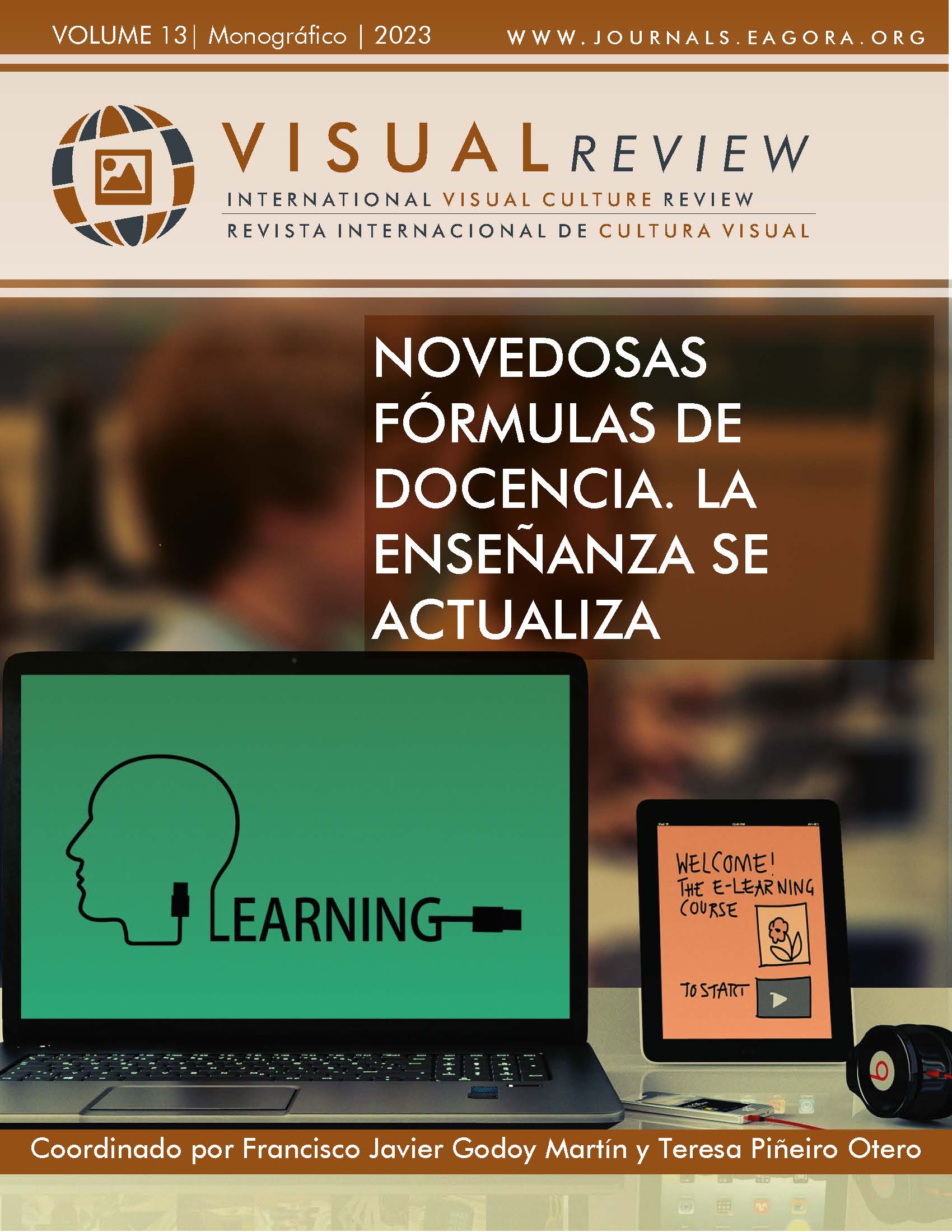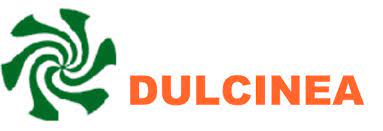Efecto de la estrategia de enseñanza implícita en jugadores de baloncesto
DOI:
https://doi.org/10.37467/revvisual.v10.4577Palabras clave:
Estrategia de enseñanza, Implícito, Carga mental, Rendimiento, BaloncestoResumen
Los procesos incidentales otorgan ventajas al jugador de baloncesto, pues liberan recursos para otros procesos cognitivos. El objetivo es analizar si el aprendizaje implícito reduce el estrés y produce un efecto en las acciones motrices. Participaron 24 estudiantes. Se diseñaron 4 condiciones experimentales con limitación temporal, motriz y combinación de ambas. La modificación en las condiciones de práctica influye significativamente en el esfuerzo percibido de los jugadores y en determinadas variables individuales y colectivas del juego. Se concluye que podemos considerar la restricción temporal como un medio eficaz para incrementar la carga mental en el proceso de entrenamiento.
Descargas
Estadísticas globales ℹ️
|
418
Visualizaciones
|
213
Descargas
|
|
631
Total
|
|
Citas
Abernethy, B., Schorer, J., Jackson, R.C., & Hagemann, N. (2012). Perceptual training methods compared: The relative efficacy of different approaches to enhancing sport-specific anticipation. Journal of Experimental Psychology: Applied, 18(2), 143-153. https://cutt.ly/U2iqKeL DOI: https://doi.org/10.1037/a0028452
Abreu, A., & Estevez, P.( 2014). Bases neurocientíficas de la toma de decisiones en el deporte. En F. Del Villar & L. García (Eds.), El entrenamiento táctico y decisional en el deporte. Editorial Síntesis. https://dialnet.unirioja.es/servlet/articulo?codigo=4875035
Alarcon, F., Castillo-Diaz, A., Madinabeitia, I., Castillo- Rodriguez, A., & Cardenas, D. (2018). Mental workload impairs the pass precision in soccer players. Revista de psicología del deporte, 27(2), 155–164. https://cutt.ly/m2iqEFh
Abreu, A., & Estevez, P.( 2014). Bases neurocientíficas de la toma de decisiones en el deporte. En F. Del Villar & L. García (Eds.), El entrenamiento táctico y decisional en el deporte. Editorial Síntesis. https://dialnet.unirioja.es/servlet/libro?codigo=564203
Araújo, D., Fonseca, C., Davids, K., Garganta, J., Volossovitch, A., Brandao, R., & Krebs, R. (2010). The role of ecological constraints on expertise development. Talent Development & Excellence, 2(2), 165-179. https://onx.la/70479
Balagué, N., Pol, R., Torrents, C., Ric, A., & Hristovski, R. (2019). On the Relatedness and Nestedness of Constraints. Sports Medicine, 5(6), 1-10. https://doi.org/10.1186/s40798-019-0178-z DOI: https://doi.org/10.1186/s40798-019-0178-z
Borg, G. A. (1982). Psychological basis of physical exertion. Medicine and Science in Sports and Exercise, 1(14), 377-381. https://pubmed.ncbi.nlm.nih.gov/7154893/ DOI: https://doi.org/10.1249/00005768-198205000-00012
Borges P. J., Ruiz E., & Argudo-Iturriaga, F. M. (2019). Comparación de dos metodologías de enseñanza-aprendizaje en waterpolo. Retos, 35(1), 329-334. http://orcid.org/0000-0002-0767-8768
Bray, S. R., Graham, J. D., Ginis, K. A. M., & Hicks, A. L. (2012). Cognitive task performance causes impaired maximum force production in human hand flexor muscles. Biological Psychology, 89(1), 195-200. https://doi.org/10. 1016/j.biopsycho.2011.10.008 DOI: https://doi.org/10.1016/j.biopsycho.2011.10.008
Brewer, C. (2018). Las destrezas motoras atléticas. Entrenamiento para el rendimiento en el deporte. Editorial Tutor. https://onx.la/f960e
Buszard, T., Farrow, D., & Kemp, J. (2013). Examining the inluence of acute instructional approaches on the decision-making performance of experienced team field sport players. Journal of Sports Sciences, 31(3), 238-247. https://doi.org/10.1080/02640414.2012.731516 DOI: https://doi.org/10.1080/02640414.2012.731516
Caldeira, P., Paulo, A., Infante, J., & Araujo, D. (2019). A influência da pedagogia não-linear e da abordagem baseada nos constrangimentos no treino do remate no voleibol. Retos, 36, 590-596. https://doi.org/10.47197/retos.v36i36.67070 DOI: https://doi.org/10.47197/retos.v36i36.67070
Camacho, P. (2016). Influencia de una estrategia de enseñanza incidental sobre variables psicológicas, fisiológicas y motoras en jugadores de baloncesto de diferentes edades y niveles de pericia. Tesis doctoral. Universidad de Huelva. http://hdl.handle.net/10272/12682
Camacho, P. (2019). Efecto del foco atencional sobre el aprendizaje de las habilidades deportivas individuales. Retos, 36(1), 561, 566. https://doi.org/10.47197/retos.v36i36.64428 DOI: https://doi.org/10.47197/retos.v36i36.64428
Camacho, P., Caraballo, I., & Alias, A. (2019). Efecto de las estrategias de enseñanza incidentales sobre la carga de trabajo en el fútbol. Una revisión sistemática. Journal of Sport and Health Resarch, 11(3), 211-226. https://onx.la/4d408
Cantos, J., & Moreno, F. (2018). Pedagogía no lineal como método de enseñanza de los comportamientos tácticos en los deportes de equipo, aplicación al rugby. Retos, 1(35), 402-406. https://doi.org/10.47197/retos.v0i35.63508 DOI: https://doi.org/10.47197/retos.v0i35.63508
Capio, C.M., Sit, C., Abernethy, B., & Masters, R.S.W. (2012). The possible benefits of reduced errors in the motor skills acquisition of children. Sports Medicine, Arthroscopy, Rehabilitation, Therapy & Technology, 4(1), 1-4. https://doi.org/10.1186%2F1758-2555-4-1 DOI: https://doi.org/10.1186/1758-2555-4-1
Carbonell, N., Hernández-Prados, M.A., Sarmiento, B.R., González, E.M., Aguaded, M.C., & Álvarez, J.A. (2021). Funciones ejecutivas y rendimiento futbolístico. Diseño y evaluación de un programa de intervención. Retos, 42(1), 306-315. https://doi.org/10.47197/retos.v42i0.86684 DOI: https://doi.org/10.47197/retos.v42i0.86684
Cárdenas, D., Conde-González, J., & Perales, J.C. (2015). El papel de la carga mental en la planificación del entrenamiento deportivo. Revista de Psicología del Deporte, 24(1), 91-100. https://onx.la/cea4a
Cárdenas, D., Perales, J. C., Chirosa, L. J., Conde-González, J., Aguilar-Martínez, D., & Araya, S. (2013). The effect of mental workload on the intensity and emotional dynamics of perceived exertion. Anales de psicología, 29(3), 662–673. https://doi.org/10.6018/analesps.29.3.175801 DOI: https://doi.org/10.6018/analesps.29.3.175801
Carvalho, J., Correira, V., & Araújo, D. (2013). A constraints-led approach to skill enhancement in tennis. Coaching and Sport Science Review, 60(21), 10-11. https://onx.la/66df1
Causse, M., Chua, Z., Peysakhovich, V., Del Campo, N., & Matton, N. (2017). Mental workload and neural efficiency quantified in the prefrontal cortex using fNIRS. Scientific Reports, 7(1), 1-15. https://www.nature.com/articles/s41598-017-05378-x DOI: https://doi.org/10.1038/s41598-017-05378-x
Chow, J. Y. (2013). Nonlinear Learning Underpinning Pedagogy: Evidence, Challenges, and Implications Nonlinear Learning Underpinning Pedagogy. Quest, 1(65), 469-484. https://goo.su/5U6MYa DOI: https://doi.org/10.1080/00336297.2013.807746
Clark, M. E., Mcewan, K., & Christie, C. J. (2018). The effectiveness of constraints-led training on skill development in interceptive sports: A systematic review. International Journal of Sports Science & Coaching, 14(2), 241-254. https://doi.org/10.1177/1747954118812461 DOI: https://doi.org/10.1177/1747954119829918
Cooke, A. (2013). Readying the head and steadying the heart: A review of cortical and cardiac studies of preparation for action in sport. International Review of Sport and Exercise Psychology, 6(1), 122-138. https://doi.org/10.1080/1750984X.2012.724438 DOI: https://doi.org/10.1080/1750984X.2012.724438
Cordovil, R., Araujo, D., Davids, K., Gouveia, L., Barreiros, J. Fernandes, O., & Serpa, S. (2009). The influence of instructions and bodyscaling as constraints on decision-making processes in team sports. European Journal of Sport Science 9(3), 169-179. https://onx.la/044d0 DOI: https://doi.org/10.1080/17461390902763417
Correia, V., Araujo, D., Duarte, R., Travassos, B., Passos, P., & Davids, K. (2012). Changes in practice task constraints shape decision-making behaviours of team games players. Journal of Science and Medicine in Sport, 15(3), 244-249. https://doi.org/10.1016/j.jsams.2011.10.004 DOI: https://doi.org/10.1016/j.jsams.2011.10.004
Correia, V., Carvalho, J., & Araújo, D. (2014). La manipulación de los constreñimientos en los deportes colectivos. En F. Del Villar & L. García (Eds). El entrenamiento táctico y decisional en el deporte. Editorial Síntesis. https://dialnet.unirioja.es/servlet/articulo?codigo=4875226
Coutinho, D., Gonçalves, B., Travassos, B., Wong, D. P., Coutts, A. J., & Sampaio, J. E. (2017). Mental fatigue and spatial references impair soccer players’ physical and tactical performances. Frontiers in Psychology, 1(8), 1645. https://doi.org/10.3389/fpsyg.2017.01645 DOI: https://doi.org/10.3389/fpsyg.2017.01645
Craig, C., & Watson, G. (2011). An afordance based approach to decision making in sport: Discussing a novel methodological framework. Revista de Psicología del Deporte, 20(2), 689-708. https://psycnet.apa.org/record/2011-21527-026
Delextrat, A., & Martinez, A. (2014). Small-sided game training improves aerobic capacity and technical skills in basketball players. International Journal of Sports Medicine, 35(5), 385–391. https://doi.org/10.1055/s-0033-1349107 DOI: https://doi.org/10.1055/s-0033-1349107
Del Villar, F., & García, L. (2014). El entrenamiento táctico y decisional en el deporte. Síntesis. https://dialnet.unirioja.es/servlet/libro?codigo=564203
Duarte, R., Araújo, D., Correia, V., Davids, K., Marques, P., & Richardson, M. J. (2013). Competing together: Assessing the dynamics of team–team and player–team synchrony in professional association football. Human Movement Science, 32(4), 555-566. https://doi.org/10.1016/j.humov.2013.01.011 DOI: https://doi.org/10.1016/j.humov.2013.01.011
Esteves, P. T., De Oliveira, R. F., & Araújo, D. (2011). Posture-related affordances guide attacks in basketball. Psychology of Sport and Exercise, 12(6), 639-644. https://goo.su/RlSKUu DOI: https://doi.org/10.1016/j.psychsport.2011.06.007
Eston, R. (2012). Use of ratings of perceived exertion in sports. International Journal of Sports Physiology and Performance, 7(2), 175–182. https://doi.org/10.1123/ijspp.7.2.175 DOI: https://doi.org/10.1123/ijspp.7.2.175
Figueira, B., Exel, J., Gonçalves, B., Masiulis, N., & Sampaio, J. (2019). Exploring new approaches to access cognitive demands in football small-sided games. Motricidade, 15(160), 183–184. https://search.proquest.com/docview/2183023080?accountid=14542
Flávio, V., & Evangelista, R. (2012). Aplication of different load quantification methods during a karate training sesión, Revista Brasileira de Medicina do Esporte, 18(4), 278-282. https://onx.la/1de1d DOI: https://doi.org/10.1590/S1517-86922012000400012
Fraser, K., M, I., Teteris, E., Baxter, H., Wright, B., & McLaughlin, K. (2012). Emotion, cognitive load and learn- ing outcomes during simulation training. Medical Education, 46(11), 1055-1062. https://doi.org/10.1111/ med.2012.46.issue-11 DOI: https://doi.org/10.1111/j.1365-2923.2012.04355.x
Gamero Portillo, M., García Ceberino, J., Reina Román, M., Feu Molina, S., & Antúnez Medina, A. (2019). Estudio de las variables pedagógicas de las tareas de baloncesto en función de las fases de juego. Retos, 37(37), 556-562. https://doi.org/10.47197/retos.v37i37.71243 DOI: https://doi.org/10.47197/retos.v37i37.71243
Glockner, A., Heinen, T., Johnson, J. G. & Raab, M. (2012). Network approaches for expert decisions in sports. Human Movement Science, 31(2), 318-333. https://goo.su/yiQGP DOI: https://doi.org/10.1016/j.humov.2010.11.002
Gonçalves, B., Marcelino, R., Torres-Ronda, L., Torrents, C., & Sampaio, J. (2016). Effects of emphasising opposition and cooperation on collective movement behaviour during foot- ball small-sided games. Journal of Sports Sciences, 34(14), 1346-1354. https://goo.su/sfEH0F DOI: https://doi.org/10.1080/02640414.2016.1143111
Headrick, J., Davids, K, Renshaw, I., Araujo, D., Passos, P., & Fernandes, O. (2012). Proximity-to-goal as a constraint on patterns of behaviour in attacker-defender dyads in team games. Journal of Sports Sciences 30(3), 247-253. https://doi.org/10.1080/02640414.2011.640706 DOI: https://doi.org/10.1080/02640414.2011.640706
Kalkhoran, J. F., & Shariati, A. (2014). He efect of attentional-focus ins- truction on peripheral transfer from dominant hand to non-dominant hand and vice versa in basketball dribbling. International Research Journal of Applied and Basic Sciences, 8(5), 584-589. http://dx.doi.org/10.1080/02701367.2011.10599746 DOI: https://doi.org/10.1080/02701367.2011.10599746
Klusemann, M. J., Pyne, D. B., Foster, C., & Drinkwater, E. J. (2012). Optimising technical skills and physical load- ing in small-sided basketball games. Journal of Sports Sciences, 30(14), 1463–1471. http://dx.doi.org/10.1080/02640414.2012.712714 DOI: https://doi.org/10.1080/02640414.2012.712714
Komar, J., Chow, J.-Y., Chollet, D., & Seifert, L. (2013). Effect of analogy instructions with an internal focus on learning a complex motor skill. Journal of Applied Sport Psychology, 26(1), 17-32. https://doi.org/10.1080/10413200.2013.771386 DOI: https://doi.org/10.1080/10413200.2013.771386
Lohse, K.R., Sherwood, D. E., & Healy, A.F. (2014). On the advantage of an external focus of attention: a benefit to learning or performance? Human Movement Science, 33(1), 120-134. https://doi.org/10.1016/j.humov.2013.07.022 DOI: https://doi.org/10.1016/j.humov.2013.07.022
Lola, A.C., Tzetzis, G. C., & Zetou, H. (2012). The effect of implicit and explicit practice in the development of decision making in volleyball serving. Perceptual and Motor Skills, 114(2), 665-678. https://doi.org/10.2466/05.23.25.pms.114.2.665-678 DOI: https://doi.org/10.2466/05.23.25.PMS.114.2.665-678
Lopes, J. E., Araujo, D., Duarte, R., Davids, K. & Fernándes, O. (2012). Instructional constraints on movement and performance of players in the penalty kick. International Journal of Performance Analysis in Sport, 12(2), 331-345. http://dx.doi.org/10.1080/24748668.2012.11868602 DOI: https://doi.org/10.1080/24748668.2012.11868602
Maxwell, J., Capio, C., & Masters, R.S.W. (2016). Interaction between motor ability and skill learning in children: Application of implicit and explicit approaches. European Journal of Sport Science, 17(4), 407-416. https://doi.org/10.1080/17461391.2016.1268211 DOI: https://doi.org/10.1080/17461391.2016.1268211
Rendell, M., Farrow, D., Masters, R. S. W., & Plummer, N. (2011). Implicit practice for technique adaptation in expert performers. International Journal of Sports Science and Coaching, 6(4), 553-566. https://doi.org/10.1260/1747-9541.6.4.553 DOI: https://doi.org/10.1260/1747-9541.6.4.553
Saemi, E., Abdoli, B., Farsi, A., & Sanjari, M.A. (2016). The interaction of external/internal and relevant/irrelevant attentional focus on skilled performance: The mediation role of visual information. Medicina Dello Sport, 69(4), 1-11. https://goo.su/PrQzMPV
Scanlan, A. T., Wen, N., Tucker, P. S., & Dalbo, V. J. (2014). The relationships between internal and external training load models during basketball training. The Journal of Strength & Conditioning Research, 28(9), 2397–2405. https://doi.org/10.1519/JSC.0000000000000458 DOI: https://doi.org/10.1519/JSC.0000000000000458
Wulf, G. (2013). Attentional focus and motor learning: A review of 15 years. International Review of Sport and Exercise Psychology, 6(1), 77-104. https://doi.org/10.1080/1750984X.2012.723728 DOI: https://doi.org/10.1080/1750984X.2012.723728
Zhu, F. F., Poolton, J.M., Wilson, M.R., Maxwell, J.P., & Masters, R.S.W. (2011). Neural coactivation as a yardstick of implicit motor learning and the propensity for conscious control of movement. Biological Psychology, 87(1), 66-73. https://doi.org/10.1016/j.biopsycho.2011.02.004 DOI: https://doi.org/10.1016/j.biopsycho.2011.02.004
Descargas
Publicado
Cómo citar
Número
Sección
Licencia
Los autores/as que publiquen en esta revista aceptan las siguientes condiciones:
- Los autores/as conservan los derechos de autor.
- Los autores/as ceden a la revista el derecho de la primera publicación. La revista también posee los derechos de edición.
- Todos los contenidos publicados se regulan mediante una Licencia Atribución/Reconocimiento-SinDerivados 4.0 Internacional. Acceda a la versión informativa y texto legal de la licencia. En virtud de ello, se permite a terceros utilizar lo publicado siempre que mencionen la autoría del trabajo y a la primera publicación en esta revista. Si transforma el material, no podrá distribuir el trabajo modificado.
- Los autores/as pueden realizar otros acuerdos contractuales independientes y adicionales para la distribución no exclusiva de la versión del artículo publicado en esta revista (p. ej., incluirlo en un repositorio institucional o publicarlo en un libro) siempre que indiquen claramente que el trabajo se publicó por primera vez en esta revista.
- Se permite y recomienda a los autores/as a publicar su trabajo en Internet (por ejemplo en páginas institucionales o personales), una vez publicado en la revista y citando a la misma ya que puede conducir a intercambios productivos y a una mayor y más rápida difusión del trabajo publicado (vea The Effect of Open Access).













